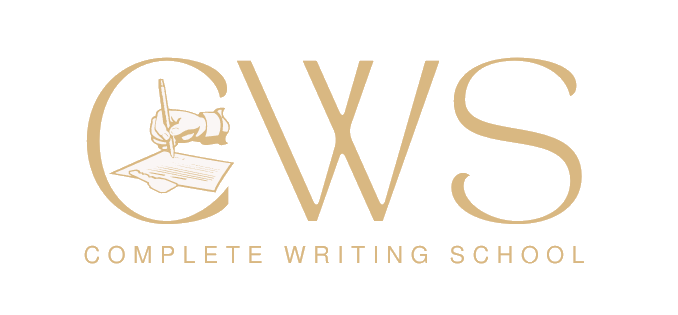Do you need to learn how to use quotation marks correctly? Mastering quotation marks is a huge benefit for your writing. So, let’s take a dep dive into the tricks to get quotation marks done the right way.
How to Use Quotation Marks: Giving Words a Stage
Quotation marks play a crucial role in writing, helping to distinguish spoken words, direct quotations, and certain titles. Whether you’re incorporating a famous quote, capturing dialogue, or emphasizing a phrase, using quotation marks correctly ensures clarity and professionalism in your writing.
In this guide, we’ll explore the rules and best practices for how to use quotation marks, so your words always hit the right note.
Quoting Direct Speech
Quotation marks are like the superheroes of writing when you want to show exactly what someone said. Imagine you’re reading about this epic mountain climb, and one of the climbers yells out, “I can’t believe we made it to the top!”
Those little marks around the words act like a spotlight, showing you the exact words someone said. It’s like bringing their excitement or surprise right into your reading experience.
We place a comma after the introduction but before the opening quotation mark, like this:
Mark said, “I would like to invite you to my house for dinner.”
Also, in American English, the period is placed inside the quotation mark. In British English, it is place outside of the quotation mark.
The text that reads “Mark said,” is called the attribution. It tells you who is doing the speaking. The attribution may come before the quote, as it does above. It may also come after the quote, like this:
“I would like to invite you to dinner,” Mark said.
Punctuating Dialogue

When your sentence ends with dialogue, tuck the punctuation inside the quotation marks.
“I’ll meet you at the park,” she said. But if the dialogue isn’t the end of your sentence, the punctuation hangs outside the quotes.
“Can you believe this weather?” she asked, raising an eyebrow.
Nested Quotes
When you quote someone who’s quoting someone else, it’s called a nested quote. It’s a quote within a quote. Use single quotation marks for the inner quote, like this:
She said, “He told me, ‘I will be there soon’ when he called on the telephone last night.”
When quoting a question, place the question mark inside the closing quotation mark.
Jorge asked, “Did you read the article ‘Unlocking the Magic of Punctuation’ in class yesterday?”
Quotation marks love consistency. If you’re using double quotes for dialogue, stick with that throughout your writing. Mixing and matching single and double quotes can lead to some confusing punctuation chaos.
No Quotation Marks for Indirect Speech
If you’re paraphrasing someone’s words rather than quoting them directly, there is no need to include quotation marks.
He mentioned that he was excited to start a new adventure.
With Titles of Short Stories, Newspaper or Blog Articles, and Poems
When writing the titles of short stories, articles on websites, blog posts, or poems — in other words shorter written works — place the title within quotation marks. Here is an example:
I read an interesting article called “How to Eat Healthy at Any Age” on my friend’s nutrition blog.
By the way, names of longer works, such as books, movies, plays, and the names of newspapers and magazines, are placed in italics. For example:
Have you read the excellent book called The Book Thief?
Only the names of shorter written works, such as blog posts, magazine articles, and poems, are placed within quotation marks.
More Advanced Uses

There are a few more situations where quotation marks come to the rescue. Let’s unravel these quirky scenarios:
1. Scare Quotes: There are quotation marks used to cast doubt or imply irony? They’re like air quotes for your writing.
The “healthy” smoothie was actually packed with sugar.
2. British vs. American Style: Brace yourself for a culture clash! In British English, they often use single quotes for dialogue and double quotes for quotes within dialogue. So, “She said, ‘I’ll see you later'” is the British way.
3. Quotation Marks with Text Messages: Quotation marks love modern communication too! When you’re showing text messages, they’re your BFFs.
“Hey, are you coming over later?” came the message.
4. Quotation Marks in Fiction: In creative writing, you can bend the rules a bit for artistic effect. Quotation marks might appear at the beginning of a paragraph but not at the end, or you might use single quotes for a unique touch.
Common Quotation Quandaries and How to Use Quotation Marks
Now, let’s explore some tricky situations you might stumble upon while working and how to use quotation marks correctly:
1. Periods and Commas: Remember, periods that are a part of a quote should always be placed inside the quotation marks. The common between the attribution (She said,) should not be within the quote marks.
She said, “The party starts at 6 o’clock.”
But a comma that appears after the sentence and the attribution should be.
“The party starts at 6 o’clock,” she said.
2. Question Marks and Exclamation Points: These quotation marks may be placed either inside or outside the quotes, depending on the context.
“Did she say, ‘Surprise!’?”
“Can you believe he yelled, ‘I won the lottery’!”
3. Semicolons and Colons: These dignified punctuation marks prefer hanging out outside the quotes.
I have written three blog posts: “Taking Pride in Small Victories,” “How to Be a Postive Influence at Work,” and “How to Deal with Challenges in a Prodictive Way.”
4. Complex Nested Quotes: This one is rare, but you may encounter it at times. The trick in using quotation marks correctly is to switch from double quotes to single ones when appropriate and to make sure that you have a closing quote mark for each opening one.
“She said, ‘The sign read, ”No entry after 10 p.m.”’.”
5. Ellipses and Quotation Marks: When you’re trailing off with an ellipsis, don’t forget to keep the ellipsis inside the quote marks. Also, you still need to add the period, or question mark, after the elipsis, so you will need to have four dots if a period is required.
“His voice faded into the distance….”
6. Quoting a Full Sentence: If you’re quoting a full sentence, be sure to capitalize the first letter.
“She replied, ‘Life is what happens when you’re busy making other plans.'”
7. Uncertainty and Quotation Marks: If you’re unsure about a term or using a word in a specific way, quotation marks signal that you’re using it with caution.
The so-called “magic potion” didn’t quite work.

I hope this guide to how to use quotation marks have been helpful and you now feel ready to enter the enchanting world of quotation marks. You now have the knowledge to make dialogue stand out, give emphasis to quotes, and jazz up your writing with style.
Remember, practice makes punctuation perfect. Write dialogues, experiment with quotes, and use those quotation marks with confidence. The more you practice with them, the more natural it becomes. I hope this guide has helped you to better understand how to use quotation marks correctly.
Also, punctuation isn’t about rules; it’s about enhancing your voice and communicating your thoughts.
Wes is a certified English teacher and school administrator. He has taught English literature, reading, and writing to students from grade 8 to older adult since 1998. He has taught both native speakers of English as well as English-language learners.
Please send Wes a message here and he will reply within 12 hours.
You can learn more about Wes here.



